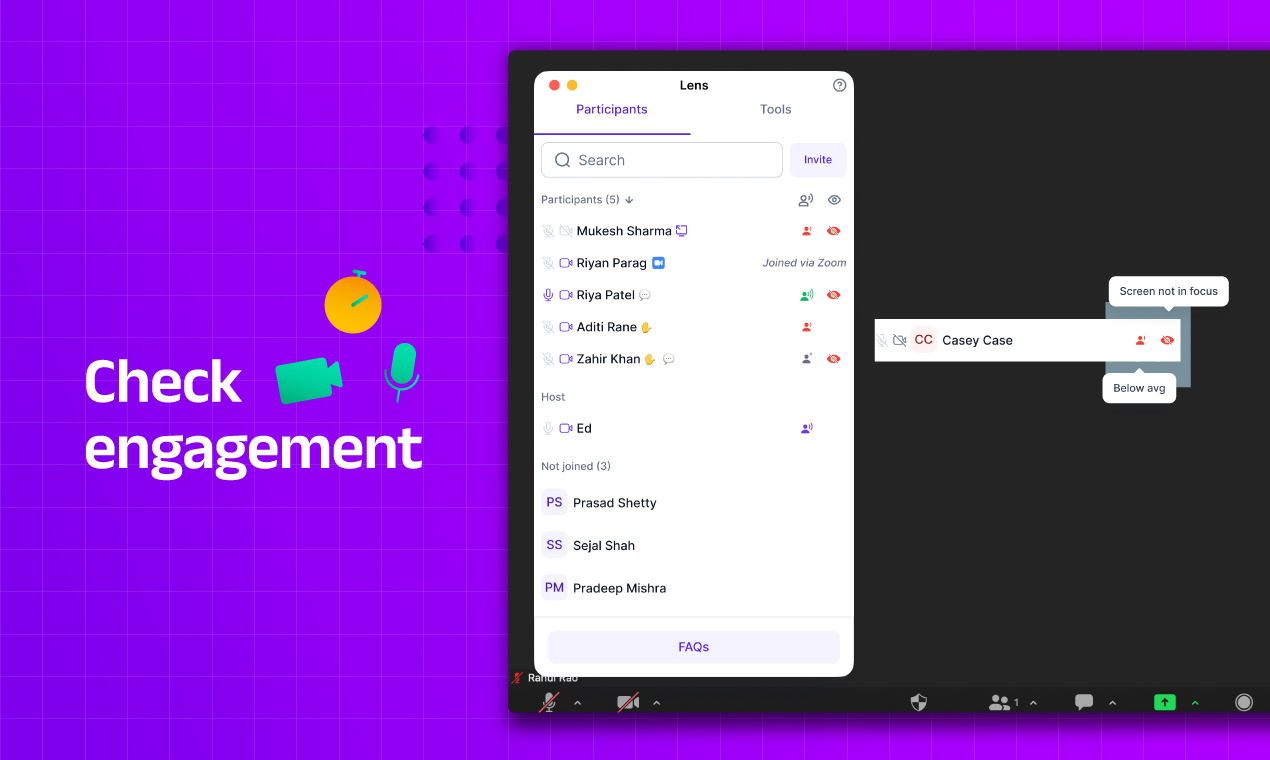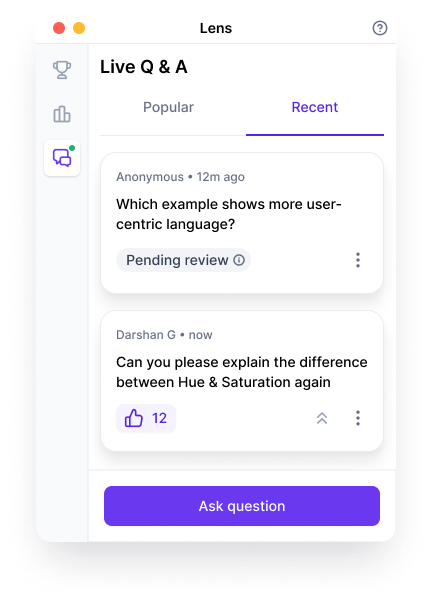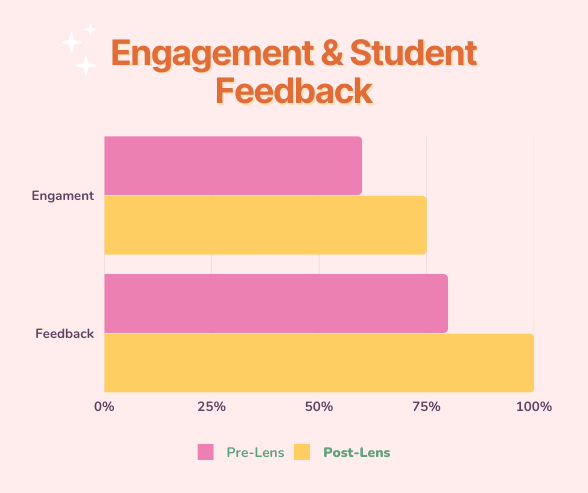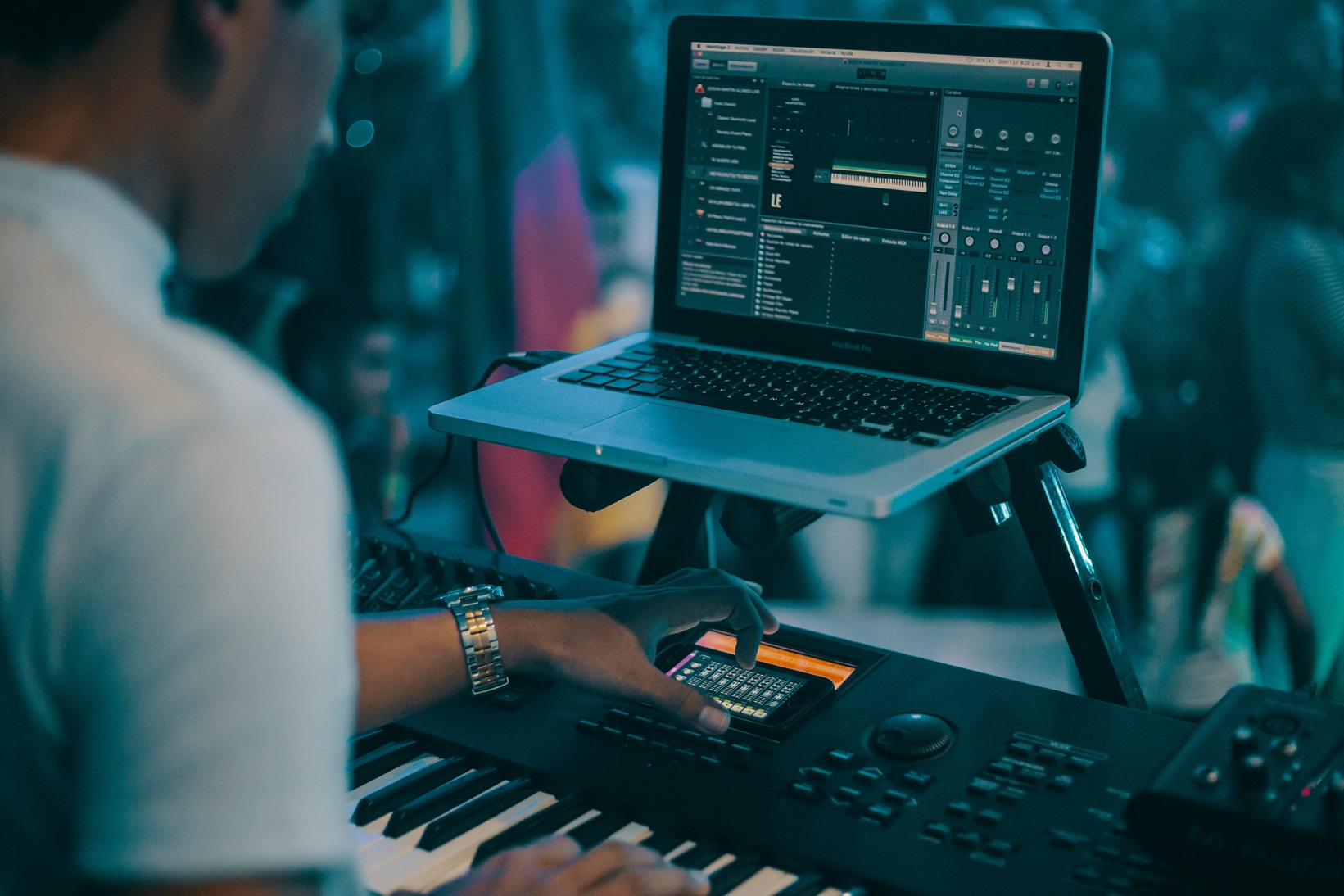The global EdTech market is slated to touch $348 billion by 2030. With such a high-trust and high-touch business, retention and engagement are core problems that need to be addressed alongside the unprecedented growth in EdTech.
One of the critical problems is that you can’t track live class engagement. Most video conferencing platforms are opaque, providing online instructors only with automated attendance in the name of engagement metrics for their classes. This lack of engagement tracking can have several negative consequences, including:
- Increased student dropout rates
- Decreased student satisfaction
- Decreased instructor satisfaction
To address these challenges, developing tools and strategies to help online instructors track student engagement in live classes is essential.
Engagement in Live Classes: The Problem

A report from Idaho highlights a significant challenge: over half of students in online classes are disengaged. This underscores the importance of proactively embedding engagement strategies into your product to minimize drop-offs at every level.
The downstream consequences of disengagement are considerable. For businesses, it leads to higher customer acquisition costs (CAC) due to fewer referrals. In educational institutions, increased drop-off rates can jeopardize future funding opportunities. Clearly, this issue warrants thorough investigation.
At the heart of the problem lies a key distinction between live online and in-person classes. In offline settings, teachers can instantly identify disengaged students through non-verbal cues and intervene effectively. Moreover, the physical classroom environment inherently discourages students from withdrawing mid-session, a challenge that is far harder to address in virtual settings.
In live classes, this system isn’t as intuitive or easy. However, you can track live class engagement using tools like Lens – which can also be integrated with your LMS.
Learn how Bodhi School of Yoga improved student engagement with Wise LMS.
Metrics to track live class engagement
1. Attentiveness: A passive metric for live class engagement

While tracking “attentiveness” as a quantitative measure in live and physical classes is impossible, a quick proxy exists. With Lens, you can check if the learner is focused on the meeting screen and has it in full view.
Effectively, if the participant hasn’t moved away from your video conferencing screen, they’re not doing anything else other than attending the class and are fully “attentive.”
Another method, though bulkier, tracks the eye movement of the student to check for attentiveness. This recent innovation mostly captures eye movements to interpret if the student is paying attention. Since this requires the live capture of video and active tracking, this method might be unsuitable for live classes where privacy is essential.
2. Talk time: Important engagement metric for small group tutoring or language classes

There are many ways to track engagement during a live class. You can check “Raised Hands” and “Emojis” in Zoom, but it doesn’t collect the quanta of participants who speak without using these tools. Tracking the participant speaking time can boost engagement in your Zoom sessions by 10 times its previous rate.
Zoom indirectly gives talk-time data post-facto through audio transcript but doesn’t offer it during meetings, making real-time live class engagement tracking difficult. Lens provides you with drill-down student engagement data in class with real-time data on their talk-time. This is not equivalent to the “Unmute” time but the time the participant spends speaking into the microphone.
Strategies to Increase Engagement in Live Classes

1. Run polls and interactive online quizzes to increase engagement live class engagement

Polls are a great way to get your students’ feedback and see how they understand the material. You can use polls to ask questions about the material, to get opinions on different topics, or to gauge student interest in other issues.
Lens offers you options around different formats of polls and quizzes, allowing you to run live quizzing during a class and ensuring maximum participation.
2. Hold a live Q&A

Hosting a live Q&A session is an excellent way to address students’ questions and actively engaging them in the class. You can either dedicate a specific time for the Q&A or allow students to submit their questions throughout the session.
Encourage students to upvote the most relevant and interesting questions, helping you prioritize effectively. You should also moderate the questions, ensuring a cleaner and more organized discussion.
3. Gamify and incentivize engagement: Create a performance leaderboard

Creating a performance leaderboard is a great way to motivate students and see their performance in class. You can use a leaderboard to track student attentiveness, engagement, and scores from polls and quizzes. Nothing compares to the dopamine rush of seeing your name climb the leaderboard during a live class.
To boost engagement in your live classes, consider incorporating these additional strategies:
- Ensure student readiness: Provide all necessary materials in advance and ensure students are comfortable with the technology.
- Start promptly: Begin classes on time with a clear agenda to set the tone.
- Use engaging methods: Incorporate tools like videos, games, and interactive exercises to make learning more dynamic.
- Foster interaction: Encourage students to actively engage with you and their peers.
- Stay adaptable: Be ready to adjust your plans as needed to maintain a productive learning environment.
These tips can enhance student engagement and make learning more effective.
One of the major challenges facing the EdTech industry is the struggle to maintain student engagement. With an abundance of alternatives, students often disengage, leading to higher drop-off rates and lower retention.
Additionally, engagement shouldn’t be limited to live classes alone. To create a holistic learning experience, consider fostering interaction outside class sessions. Invest in an LMS that promotes engagement through features like discussion boards, interactive assignments, progress tracking, and gamified learning experiences. This helps keep students motivated and connected to the learning process, even between sessions.
Implementing targeted strategies can significantly enhance engagement in live classes. Techniques such as running polls, hosting live Q&A sessions, and introducing performance leaderboards can captivate students’ attention and facilitate learning. By adopting these approaches, you can create a more engaging and impactful learning experience for your students.




